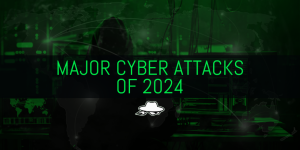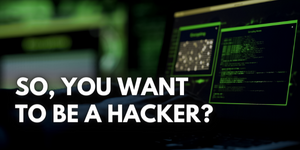Social Media Safety: Navigating Privacy Risks and Cyber Threats in the Digital Age

Reading Time: 3 Minutes
Introduction
The world is very connected these days, and social media sites have become the spot where people talk about their lives, stories, and thoughts. But as we move through these huge digital worlds, there are always privacy risks and hacking threats. If you’re not careful, the trip can be dangerous. How can we keep our personal information safe while still enjoying the lively life of these online communities?
Let’s learn more about how to stay safe on social media and find ways to stay safe in the digital world.
The Importance of Cybersecurity Education for Students
Why is it crucial to integrate cybersecurity education into the curriculum for students? The answer is simple: knowledge is power. Kids and teens today are digital natives, so it’s very important for them to learn about safety from a young age. It is very important for students to learn how to use safe and secure services as they rely more and more on online tools for school, like essay writing services. When phrases like “someone write my essay” are typed into a search engine, students must be equipped with the knowledge to discern reputable services from risky ones, ensuring their personal and payment information remains secure. Educating students about the dangers of oversharing, the significance of privacy settings, and the tactics used by cybercriminals empowers them to navigate not just social media but the entire digital landscape safely. This comprehensive approach to cybersecurity education enables them to make informed decisions online, safeguarding their personal information against potential threats.
Building Digital Resilience
Cybersecurity education is more than just teaching kids how to make strong passwords and spot fake emails. It has to do with making technology more reliable. To do this, they need to learn how to think critically about information to figure out how reliable it is, how their digital record affects others, and how to take responsibility for their actions online. By teaching these ideas, we can get the next generation ready to handle the challenges of the modern world with confidence and skill.
See Also: So you want to be a hacker?
Offensive Security and Ethical Hacking Course
Understanding the Risks: A Primer on Privacy and Security
Have you ever stopped to wonder who could be watching as you scroll through your feed, like a post, or share a photo? The truth is that everything we do on social media can be seen, analyzed, and, sadly, used against us. Cybercriminals constantly find new ways to breach our digital defenses, so we must be aware of the risks of online activity.
The Privacy Paradox
We say we care about our privacy, yet our social media behavior often contradicts that notion. Without considering the consequences, we disclose birthdays and vacation plans. We ignore our privacy concerns, leaving us vulnerable to identity theft, phishing schemes, and illegal data collecting.
The Ever-Evolving Landscape of Cyber Threats
Cyber threats are not static; they evolve as rapidly as the technology and platforms we use. Cybercriminals use sophisticated phishing attacks and harmful malware to obtain our personal information. We may first protect ourselves in the digital fight by being aware of these threats.
Strategies for Safe Social Media Use
Navigating social media safely requires a proactive approach to privacy and security. Here are some strategies to consider:
- Review and Adjust Privacy Settings: Regularly check your privacy settings to control who can see your posts, contact you, and find your profile. Social media platforms often update their settings, so stay informed.
- Think Before You Share: Adopt a mindful approach to sharing information. Ask yourself, “Could this information be used against me or to compromise my privacy?” If the answer is yes, it might be best to keep it off social media.
- Use Strong, Unique Passwords: Ensure that your social media accounts are secured with strong, unique passwords. Consider using a password manager to keep track of them.
- Enable Two-Factor Authentication (2FA): Adding an extra layer of security can significantly reduce the risk of unauthorized access to your accounts.
- Be Skeptical of Unsolicited Messages: Phishing attempts can come in the form of direct messages from strangers or even familiar contacts whose accounts have been compromised. Always verify the authenticity of messages that request personal information or prompt you to click on links.
Conclusion
In the huge world of the digital age, it’s hard to find the right mix between enjoying social media and keeping our privacy safe. We can keep our digital selves safe by knowing about the privacy risks and security threats that come with these platforms. Including cybersecurity education in school not only gets students ready for the challenges they will face but it also gives them the skills and confidence to manage the digital world safely. Let’s take advantage of the digital age’s benefits by being smart and careful about how we use social media.
This article is written by Jessica Vang.
Are u a security researcher? Or a company that writes articles about Cyber Security, Offensive Security (related to Information Security in general) that match with our specific audience and is worth sharing? If you want to express your idea in an article contact us here for a quote: [email protected]


















